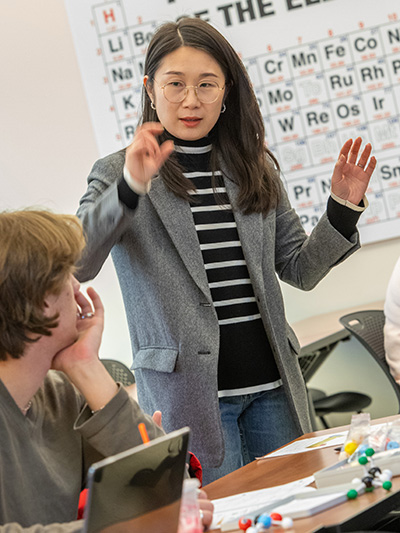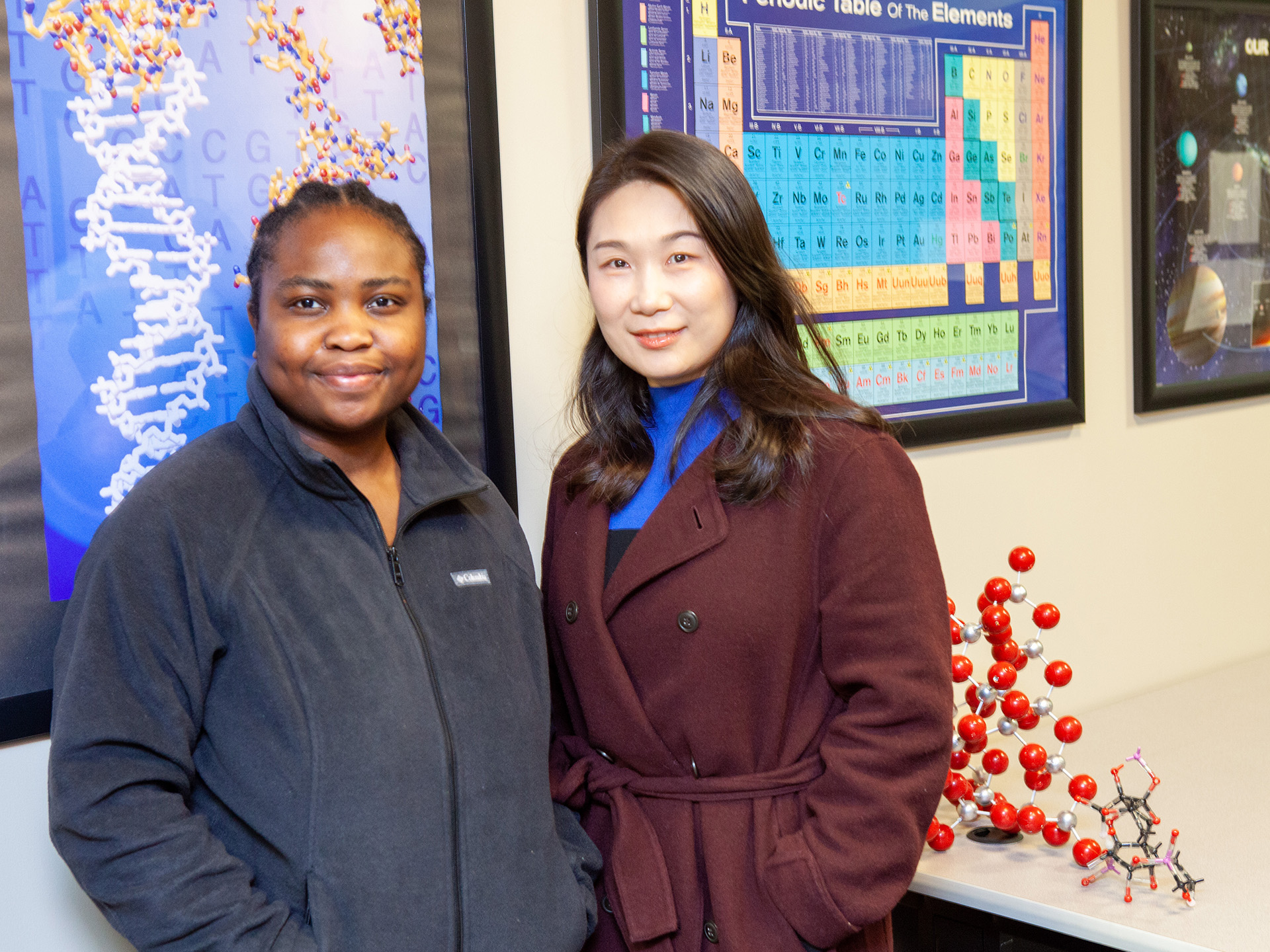- Apply
- Visit
- Request Info
- Give




 How led you to Eastern?
How led you to Eastern?“My journey to Eastern Connecticut State University began after I earned my Ph.D. in computational chemistry. I took on a role as a visiting assistant professor at Centre College, a liberal arts college in Kentucky. It was there that I genuinely came to appreciate the value of a liberal arts education — its power to foster critical thinking, creativity and holistic learning. This appreciation for liberal arts, combined with my newfound passion for teaching, led me to seek faculty positions at primarily undergraduate institutions, ultimately bringing me to Eastern.”
“My favorite class to teach is undoubtedly General Chemistry. A significant proportion of the students in this class are in their first or second year, which provides me a cherished opportunity to engage with them at the outset of their academic journey. I see it as my mission to alleviate the apprehensions many of them have towards science, particularly chemistry. By connecting with them early, I hope to demystify the subject and transform their initial trepidation into genuine interest and enthusiasm.”
“My research primarily revolves around computational chemistry, an interdisciplinary domain that synergizes computer science and chemistry, all underpinned by principles of physics. Lately, my research has been focused on cheminformatics and computer-aided drug design. For example, I am focusing on the virtual screening of polypharmacological drugs, particularly those aimed at complex diseases like Alzheimer’s and cancer; we’re leveraging deep neural multi-task learning to enhance molecular binding prediction, expediting the identification of promising drug candidates that target multiple proteins.
“My project, “Computational Chemistry and Drug Design: Molecular Recognition and Binding Prediction Powered by Machine Learning and Deep Learning Approaches,” has been accepted by the Pathways to Supercomputing initiative at Oak Ridge National Laboratory (ORNL). Throughout this initiative, I will be collaborating closely with three students from Eastern and partnering with Dr. Patricia Soto from Creighton University and her team of three students. We will utilize the computing resources from the Oak Ridge Leadership Computing Facility (OLCF) on the project.”
I want to alleviate the apprehensions many students have towards science. By connecting with them early, I hope to demystify the subject and transform their initial trepidation into genuine interest and enthusiasm.

“From my formative years as a student, I was profoundly shaped and inspired by the dedication and expertise of my instructors. I firmly believe that chemistry courses offer the opportunity to not only educate and motivate students interested in pursuing those subjects, but also those interested more broadly in science, engineering and medicine. At an even more general level, science courses provide an opportunity to develop basic problem-solving and computational skills — skills that are extremely valuable for any student who intends to be a critical thinker and active participant in society. The primary objective of my teaching is to ensure that every student becomes a confident problem solver.”
“Along with bolstering their analytic problem-solving skills, I think it is likewise important for students to develop their computational skills. While computation is very relevant for many 21st-century careers, it can also help foster the development of intuition of how complex systems behave. While learning how to solve problems numerically is a valuable skill in its own right, I have found that computers also offer students the chance to interact with chemical and biological systems in a way that is substantively different from “paper-and-pencil” analytic solutions. Computers enable students to readily visualize and analyze the complex behavior of such systems, and thus present a unique and valuable tool with which they can further strengthen their intuition and solve otherwise intractable problems.”